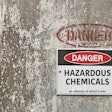It’s probably one of the most well known “cloudy water” tragedies known to anyone in the recreational water realm. On a hot Sunday in June 2011, Marie Joseph hopped into a Toyota Corolla with a group of friends to go and cool off at the Veterans Vietnam Memorial Pool at Lafayette Park in Fall River, Mass. Two days later, Joseph’s body was found floating in the public pool.
During the outing on Sunday, Joseph and a nine year old were playing on the slide. After sliding down together, the nine year old surfaced and noticed Joseph hadn’t! The nine year old notified a lifeguard that Joseph was underwater and in trouble. Responses of the lifeguards at the facility are questionable, but one of the undisputed results of the investigation afterwards showed that extremely cloudy pool water hid Joseph from lifeguards, friends and police investigators.
A police investigation revealed that visibility in the pool was less than 4 feet below the surface. Although required by state law, the bottom of the pool was not visible at all!
Drowning and near-drowning events in cloudy water have been on the rise. Many of these tragedies occur at supervised venues with lifeguards and adults in and around the pool. But oftentimes, you can’t tell a person is drowning or in trouble on the water’s surface — meaning the ability to see someone beneath the surface can be the difference between life and death. The sooner a victim can be discovered and given CPR, the better their chances of survival are.
Cloudy water is a preventable problem. Some of the main causes of a cloudy pool include poor filtration and circulation, an influx of particulate matter such as dust and dirt or buildup from swimmer waste and suntan lotions. If water balance is incorrect, high calcium hardness, high pH or total dissolved solids can all cause cloudiness. Simply having too many swimmers and a lack of sanitizer to keep up can also cause cloudiness.
This story presents one clear warning for all commercial pool operators: A pool should not be opened if the bottom drain cannot be clearly seen from the pool’s deck.
So what can an operator do to ensure the pool stays clear and the pool patrons are kept safe?
First, always make sure the pool’s equipment is in proper working order. This includes regular inspection and maintenance of filters, pumps and overall circulation. Concerns about the condition of the pool’s filtration system should immediately be reported to the proper authorities and reports of any and all work on systems should be readily available. In the same manner, all water chemistry balance and sanitizer parameters should be checked throughout the day and recorded and adjusted as needed.
Simply put, clear pool water is accomplished by the efficient removal of contaminants that invade swimming pools. These can include such things as:
- Dirt and dust
- Pollen and spores
- Algae
- Skin and hair remains from swimmers
- Bacteria
Many of these particles are micron-sized, which is smaller than most pool filters can capture. (To get an idea of the size of a micron, a grain of salt is 100 microns.) A good majority of the contaminants in pool water are below 40 microns, which is the limit the human eye can see. Most recreational facilities use sand filters, and older rapid rate filters can only filter to about 50 microns. The newer high-rate sand filters are capable of removing down to 25 microns. Again, much of the particulate matter in pools is smaller than even 25 microns. In addition, this very small material is negatively charged and has a charge-to-charge repulsion that causes it to bounce around in suspension. The more built-up this small micron material is, the hazier the pool water will become.
A regular oxidation routine of the water helps reduce and break down micron-sized organic contaminants, and regular, proactive use of a natural, non-petroleum-based clarifier can help prevent a cloudy water situation from occurring. For another solution, a two-stage double strength clarifier is available and has the ability to take particulate matter down to 0.5 micron and make it removable by the filter. Keep in mind: The more of the particulate matter that is removed by the filter, the better primary sanitizers work, which means the pool water stays clearer for a longer period of time.
Proper sanitization is especially critical prior to and after times of heavy swimmer load. In preparation for an unusually heavy swim load adding an increased dose of clarifier ahead of time can help pick up the small matter as it is introduced into the pool. At the end of the day, shocking with a non-chlorine oxidizer can assist with excess waste and help the pool recover.
Many important layers of safety are needed at public pools — everything from a well-trained, vigilant lifeguard staff to proper equipment, signage and barriers of entry for small children are all essential. However, one of the most important aspects of swimmer safety is clear water and the ability to see all swimmers beneath the surface of the water — water clarity saves lives.




































